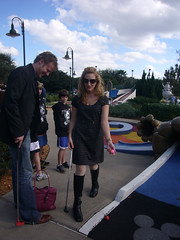Here are the questions he posed to folks like Jonathan Coulton, Imogen Heap, Ji Lee, and myself:
"When you make things with an audience in mind, do you have internal representations of that audience to help guide you in the process? Are you in dialogue with a cast of proto-audience members that somehow represent different facets of your perceived audience? Are there little homunculi that provide
editorial voices different from your own? Do you interact with them verbally or do you bounce things off of some sort of an emotional surface? Did some sort of averaging form them or were they inspired by particular moments of feedback? Do they have a shape? How would you describe their points of view? What do they look like? Do they have names? Are there ones you trust more than others? Are there ones you avoid?"
:: Ze
Kudos to to Ze for getting so many folks to think out loud so openly about such a personal process. Plus, bonus smart thoughts from 84 community comments and counting...
The answers (including my own) are ridiculously honest. Here are some excerpts from my rather lengthy response, which I wrote stream-of-consciousness style on the Caltrain and submitted completely unedited:
My players are like little actors I watch through a telescope, or, no, a camera obscura. Definitely a camera obscura. They’re like shadows on a stretchy screen, people I can’t observe directly, but rather I am observing them through some contorted gathering and refracting of light. This makes sense because in my mind
I’m observing them in the future interacting with my game, which doesn’t exist yet, so it feels very fragile, the scene, and my ability to see it play out....
...There are specific actors in the camera obscura scenes, a kind of dramatis personae that gets bigger every time I puppet master a game. I’m basically gathering up the “star players”, the ones who explored and pushed every limit of the experience, who intimately grokked the goals of the game, who lived in the game with an intensity I could barely even hope for in the best case scenario. And I have been collecting these actors, these players, into an increasingly large and diverse dramatis personae since the first reality game I wrote in 2001. ....


1 comment:
Thanks for bringing this to my attention... this is something we constantly grapple with in the museum exhibit design field, where we are trying to create experiences "for" visitors, "with" visitors, hopefully not against visitors. Interesting to me that educators and product designers are more likely to stereotype and market pigeonhole our work than artists, for whom a little personal chutzpah is considered appealing.
I think we interactive museum folks are in the same boat as game designers like you--trying to create the spark, and a boatload of available content, but then hopefully step away and make it something visitors can discover on their own. I love your hipster--we are constantly debating in the museum world the extent to which we should be challenging people, pushing them out of comfort, and how.
I shared my favorites and thoughts here.
Post a Comment